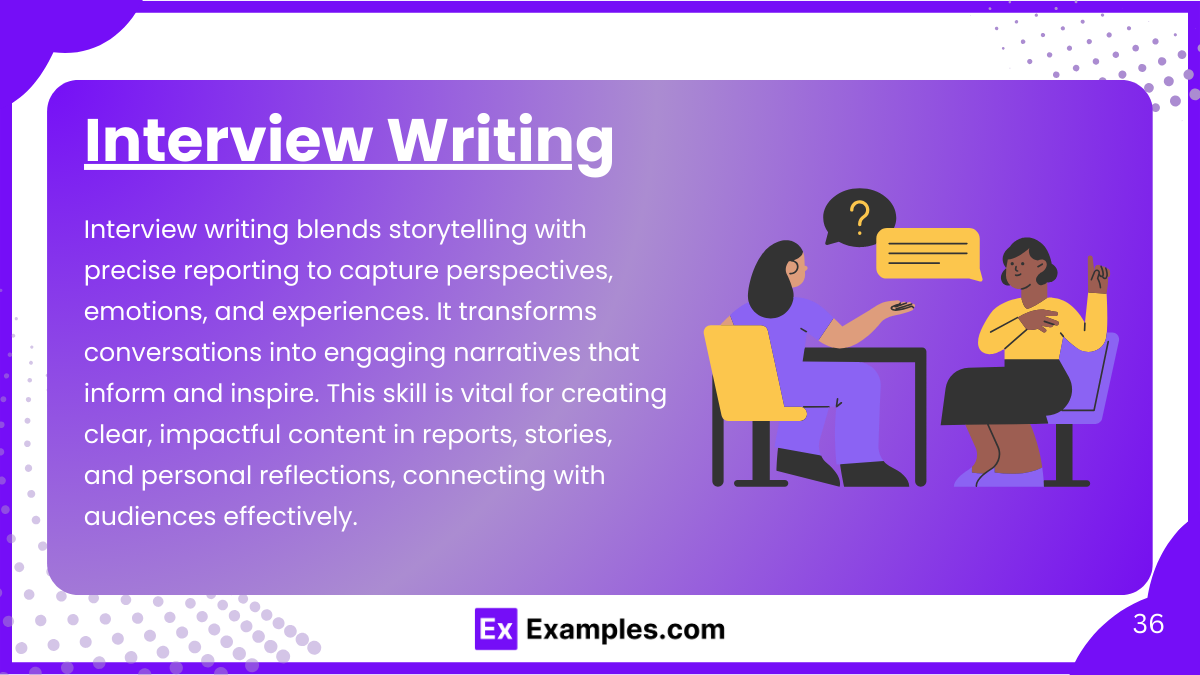7 Interview Writing Examples
Interview writing combines storytelling with the precision of a newspaper or formal report, capturing emotions, perspectives, and life goals to transform raw dialogue into compelling content. Essential for creating engaging narratives, it helps craft reports and stories that resonate with audiences. Whether exploring events, achievements, or aspirations, this skill ensures content is clear, impactful, and connects on a deeper level.
What is Interview Writing?
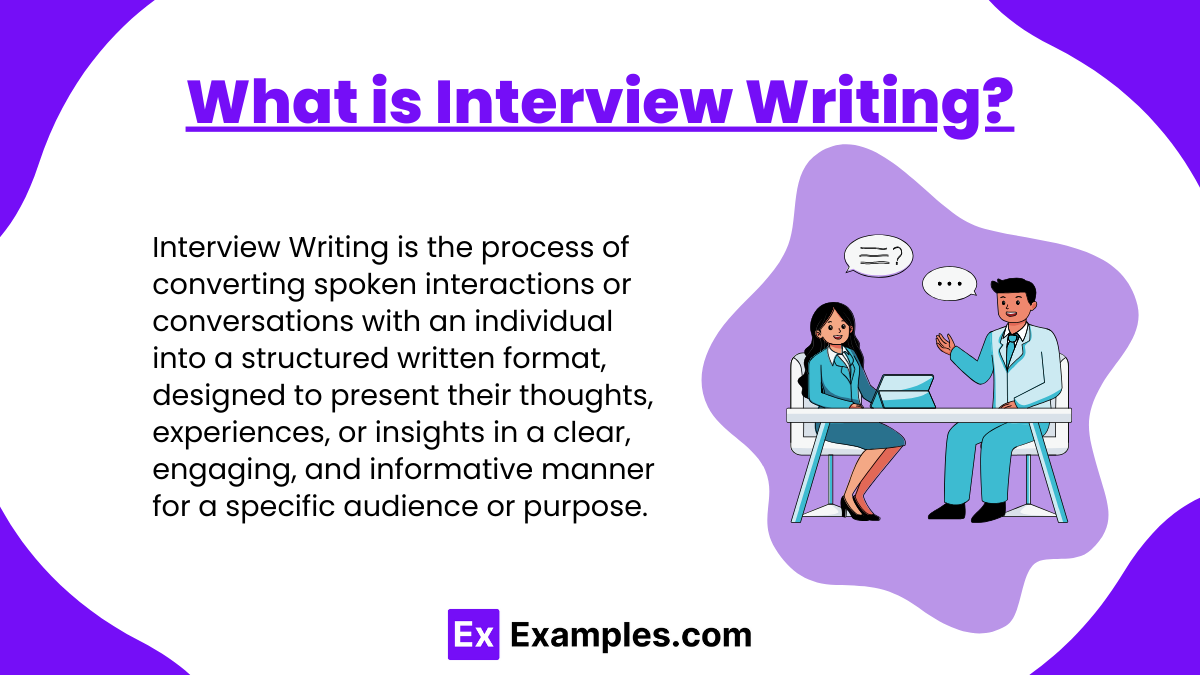
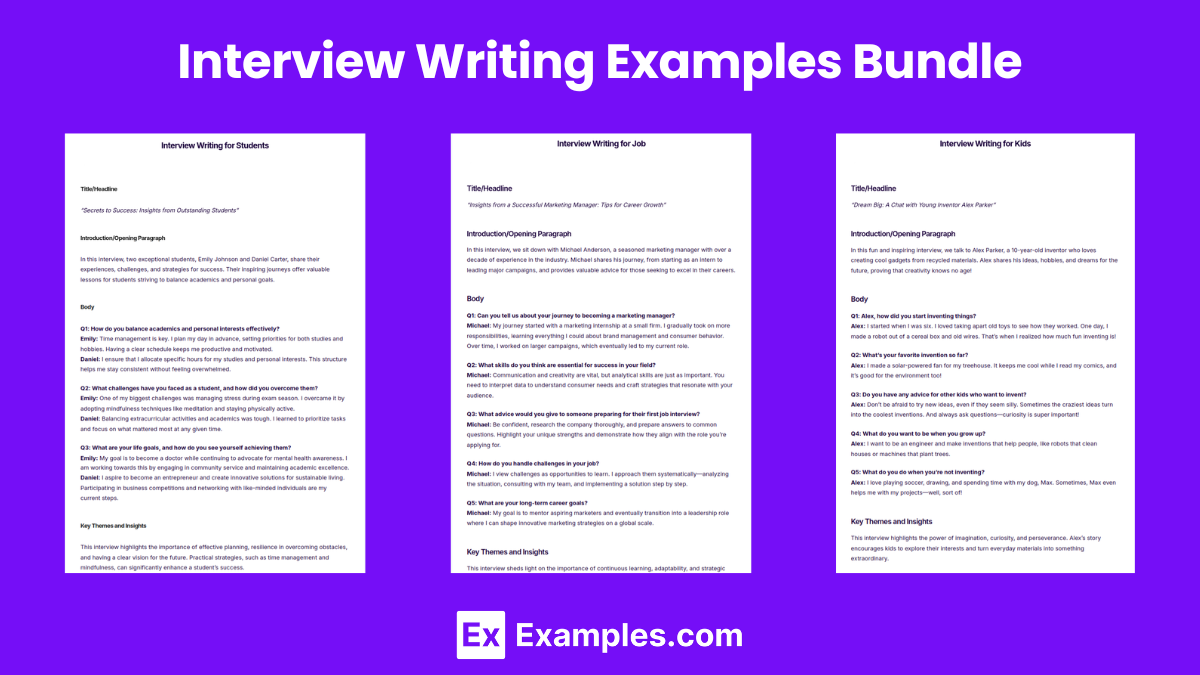
Interview Writing Examples Bundle
Interview Writing Format
Title/Headline
A catchy and relevant title that summarizes the main focus of the interview.
Example: “Achieving Dreams: A Conversation with a Young Entrepreneur”
Introduction/Opening Paragraph
Briefly introduce the interviewee, including their name, background, and why they are being interviewed. Provide context about the topic or purpose of the interview. Hook the reader with an engaging start.
Body
In the question-answer format, write the interview with each question followed by the interviewee’s response.
Example:
Q1: What inspired you to pursue this career?
A: I always had a passion for helping others and wanted to make a difference.In the narrative format, summarize the key points of the interview as a flowing story. Integrate quotes from the interviewee to maintain authenticity.
Example: John explained that his passion for helping others started in childhood, saying, “I always knew I wanted to make a difference.”
Key Themes and Insights
Highlight significant ideas, challenges, or achievements shared by the interviewee. Focus on their life goals, unique experiences, or perspectives relevant to the topic.
Conclusion/Closing Paragraph
Summarize the main takeaways from the interview. Share the interviewee’s message, advice, or future aspirations. End with a positive or thought-provoking note.
Attribution
Include the name of the interviewer (your name) and date if applicable.
Example: Interview conducted by [Your Name] on [Date].
Interview Writing Examples
Interview Writing for Students
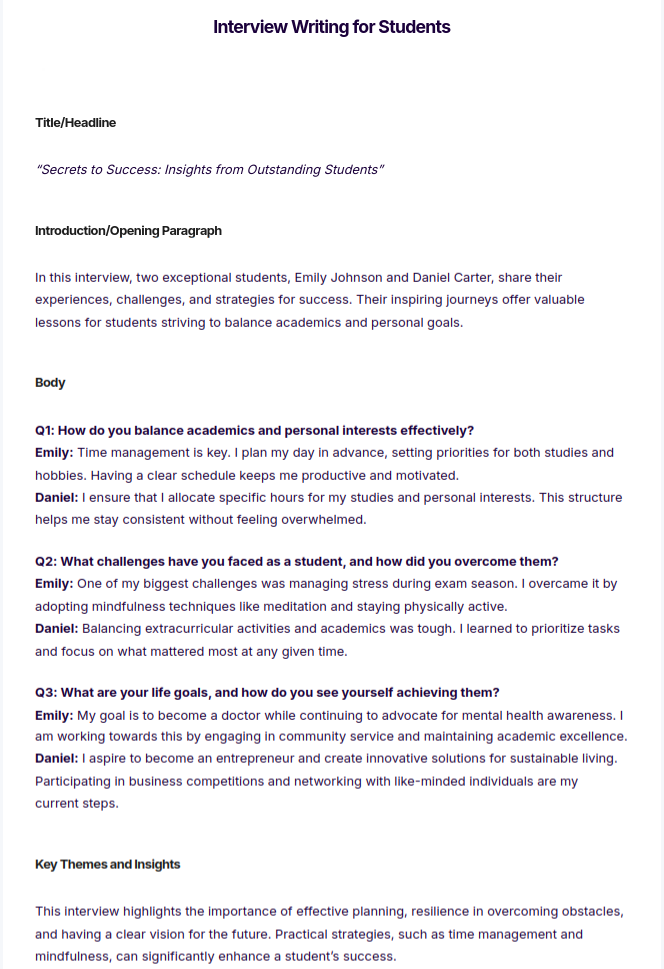
Interview Writing for Job
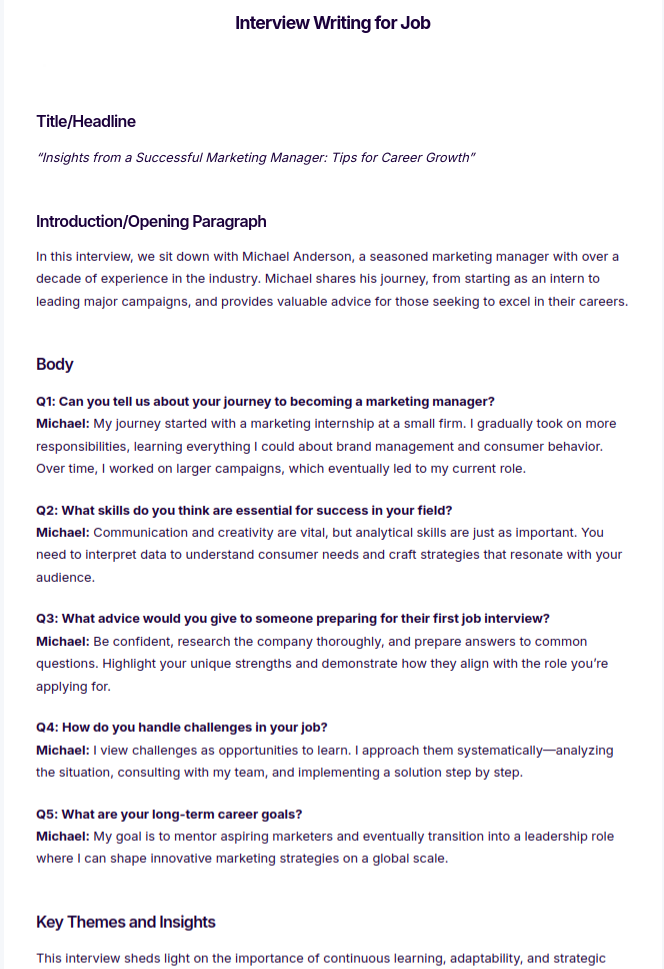
Interview Writing for Kids
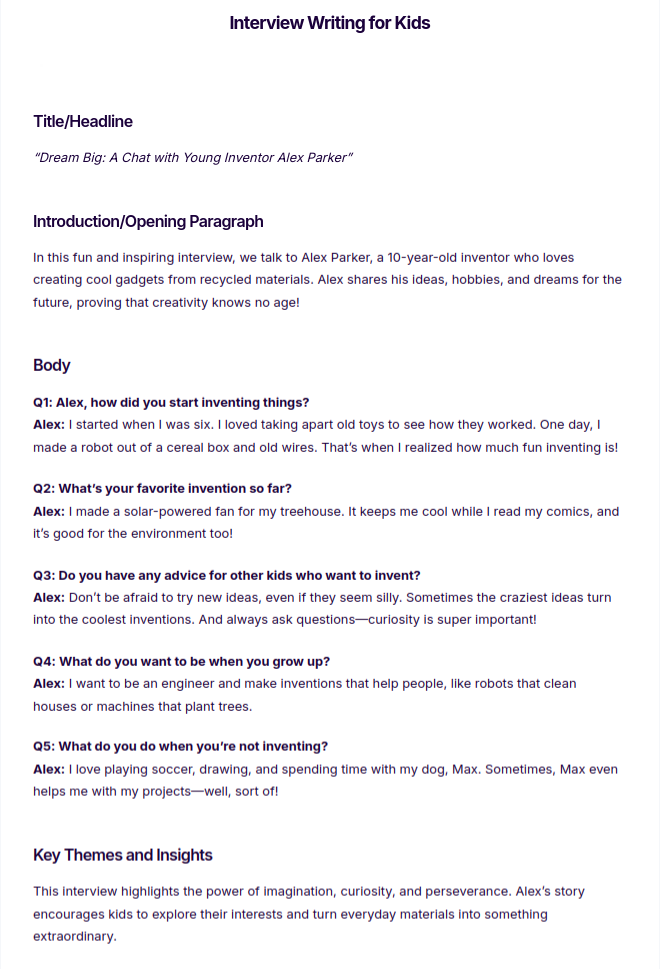
WD Author Interview: Nancy Ellen Interview Dodd Example
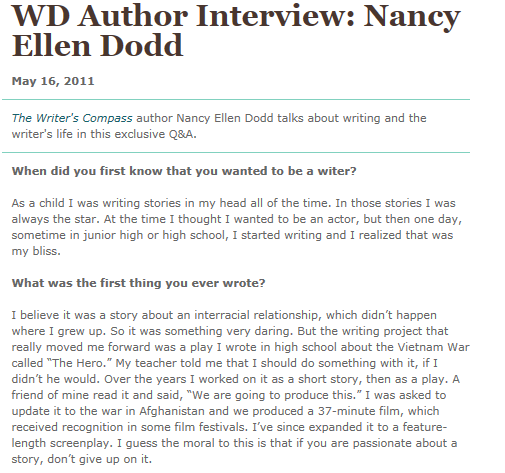
Sample Interview Guide Interview Example
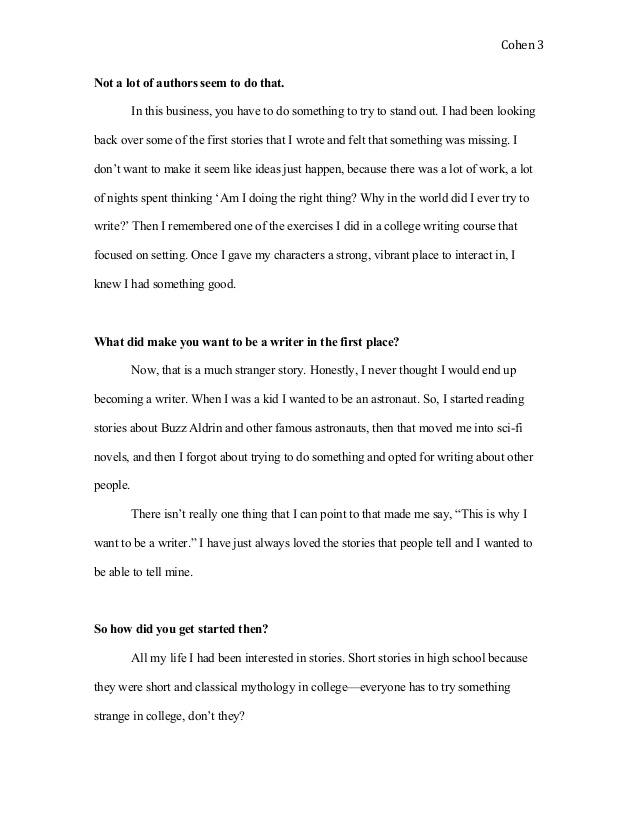
Example of a Step-by-Step Guide to Writing Interview Questions
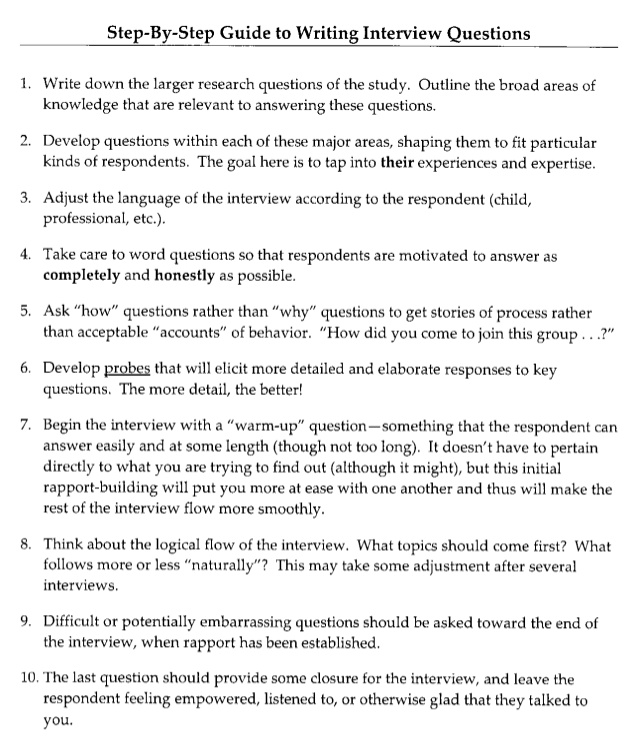
How to Write Interview Writing
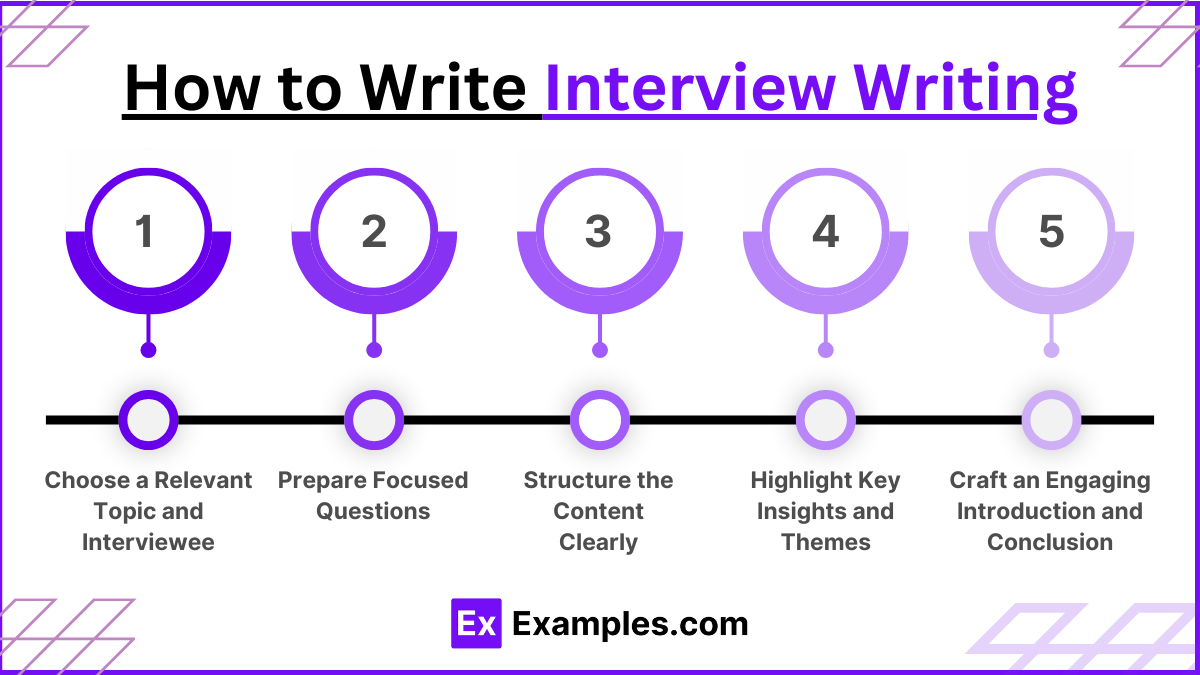
- Choose a Relevant Topic and Interviewee
Select a subject that interests your audience and an interviewee with expertise or a compelling story related to the topic. - Prepare Focused Questions
Create open-ended questions that encourage detailed and insightful responses, allowing the interviewee to share their perspective fully. - Structure the Content Clearly
Decide between a Q&A format or a narrative style, ensuring the flow is logical and engaging for the reader. - Highlight Key Insights and Themes
Emphasize the most valuable takeaways from the interview, connecting them to the topic’s purpose and the audience’s interests. - Craft an Engaging Introduction and Conclusion
Introduce the interviewee and topic in an interesting way and end with a strong summary or a memorable takeaway.
Tips for Interview Writing
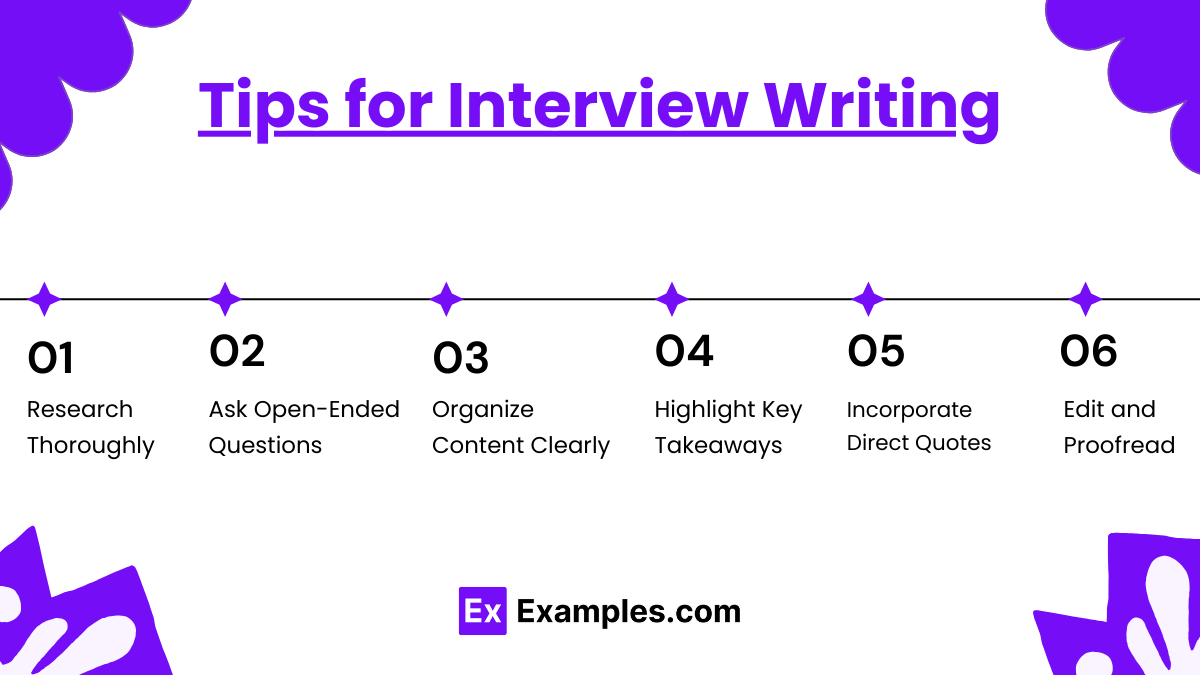
- Research Thoroughly
Understand the interviewee’s background and the topic to ensure relevant and engaging questions. - Ask Open-Ended Questions
Frame questions that encourage the interviewee to provide detailed responses and share personal insights. - Organize Content Clearly
Choose a structure—Q&A format or narrative—and ensure the flow is logical and easy to follow. - Highlight Key Takeaways
Emphasize the most significant points or lessons from the interview to engage your audience effectively. - Incorporate Direct Quotes
Use the interviewee’s words authentically to make the writing credible and relatable. - Edit and Proofread
Review for accuracy, coherence, and grammar to present a polished and professional piece.
FAQs
What are the main formats of interview writing?
The two main formats are Question-and-Answer (Q&A) and narrative style.
What is the purpose of interview writing?
It aims to present the interviewee’s insights, experiences, or expertise in an informative and compelling way.
How do I make an interview interesting to read?
Use engaging questions, highlight key takeaways, and include direct quotes from the interviewee.
Why is research important in interview writing?
Research helps create relevant questions and ensures the content is accurate and well-informed.
What skills are needed for effective interview writing?
Strong research, active listening, clear writing, and the ability to highlight key insights are essential skills for effective interview writing.


